
Our challenge to name all of the military surplus rifles in the photo above was a tough one. A number of readers were oh-so-close, but reader JOHN correctly named all nine rifles and will be receiving the prize of 300 rounds of Armscor ammunition.
Here are the answers to our quiz and a little bit of the history behind each rifle.
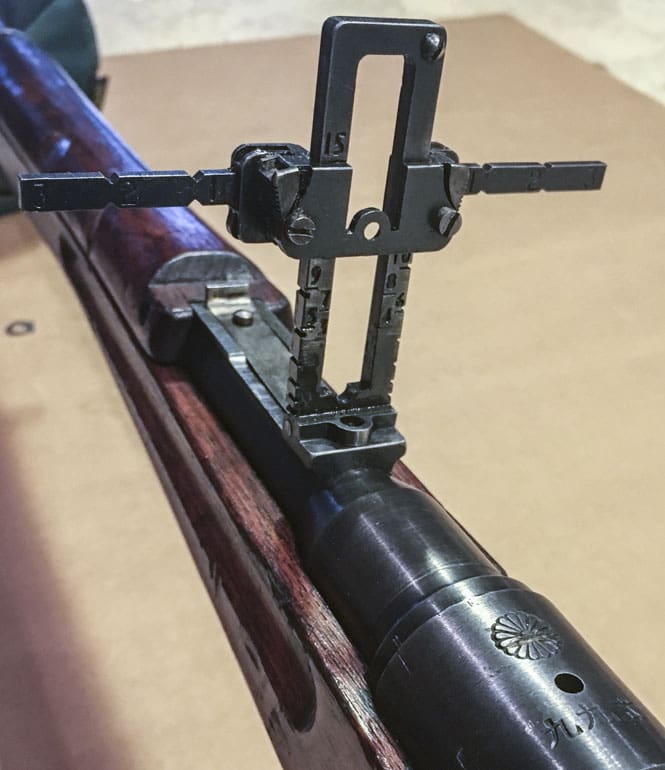
(1) Arisaka Type 99 Long
In 1905, the Japanese Imperial Army began fielding the Arisaka Type 38, a Mauser-action rifle chambered in 6.5 Japanese (ballistically comparable to 6.5 Swedish or 6.5 Creedmoor). However, by the 1930’s, they realized that they needed a battle rifle that packed a punch comparable to the Russian 7.62x54R, the .303 British, and the American 30.06. Thus began the development of a battle rifle in 7.7 Japanese (a rimless version of the .303 British), which in 1939 became the Arisaka Type 99.
The initial run of Type 99’s kept the long barrel length of the Type 38, and a rifle from this first batch is known as a Type 99 Long. After field testing, army planners found that a shorter rifle was more convenient and did not suffer any material loss of power or accuracy. All Type 99’s produced thereafter had a shorter barrel, making the Type 99 Long fairly uncommon.
Being from the initial prototype run, this particular example lacks a series markings (making it known to collectors as a “Series Zero.” Like all Type 99’s, it has a massive three-lug Mauser action, a chrome-lined barrel, and “aircraft wings” rear sights that were optimistically intended to facilitate volley fire against enemy aircraft. [image]
While the trigger is pretty heavy, it breaks cleanly and is a great shooter. Shooting off bags at 100 yards, it throws nice fist-sized groups. Milsurp ammo for it is essentially unobtainium, but modern loadings (at $0.75/$1 per round) are available.

(2) K31 Swiss
What’s not to like? Impeccably Swiss-machined straight-pull action, free-floating barrel, and probably the best production trigger in any battle rifle, ever.
This particular example is from 1941. Pair it with surplus GP11 ammo (match grade 7.5 Swiss ammo, available at less that $.50/shot) and you have an amazingly accurate shooter.

(3) M1 Carbine
Along with a 1911, this is what my Dad carried during his deployment in Korea (US Army Signals Corps, so constantly in and out of jeeps). This particular example is a first series Inland example (manufactured by a General Motors division in 1941).
OK, it’s underpowered and would be a lot more fun with the M2 giggle switch. But still a great design, and a fun shooter (albeit as with many M1’s, this one shoots about 6” to the right and a few inches low at 100 yards).
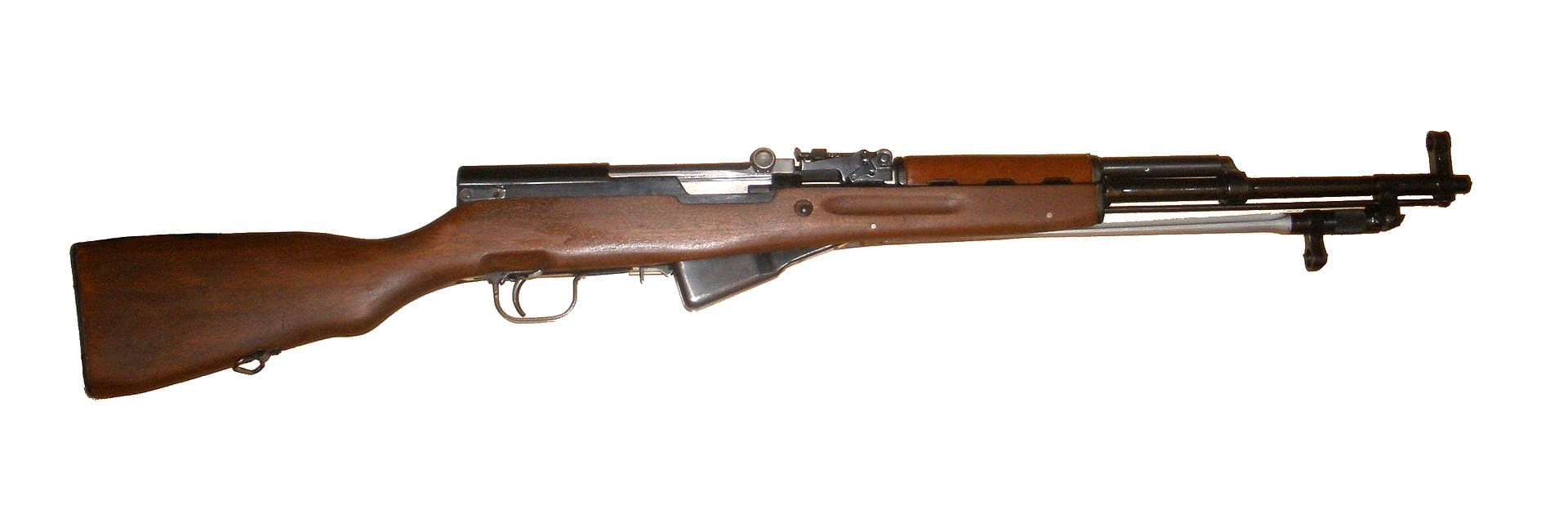
(4) SKS (Russian)
When Comrade Ivan decided to field an intermediate caliber rifle, the SKS was their first serious effort. Milled receiver, fixed magazine (loaded from stripper clips), and designed to field strip without tools. While an excellent design for its time, it was quickly supplanted by the easier-to-mass-produce AK-47, which of course also used removable magazines and was select fire.
While the SKS was widely produced and used by the other side in the Cold War (especially by the Chinese, who for many years preferred it to the AK for some reason), the early Russian-made ones are particularly well-regarded. This particular one is from the Tula Arsenal, 1950. Surprisingly good trigger, and even with cheap steel-cased Russian ammo, it shoots nice groups at 100 yards.
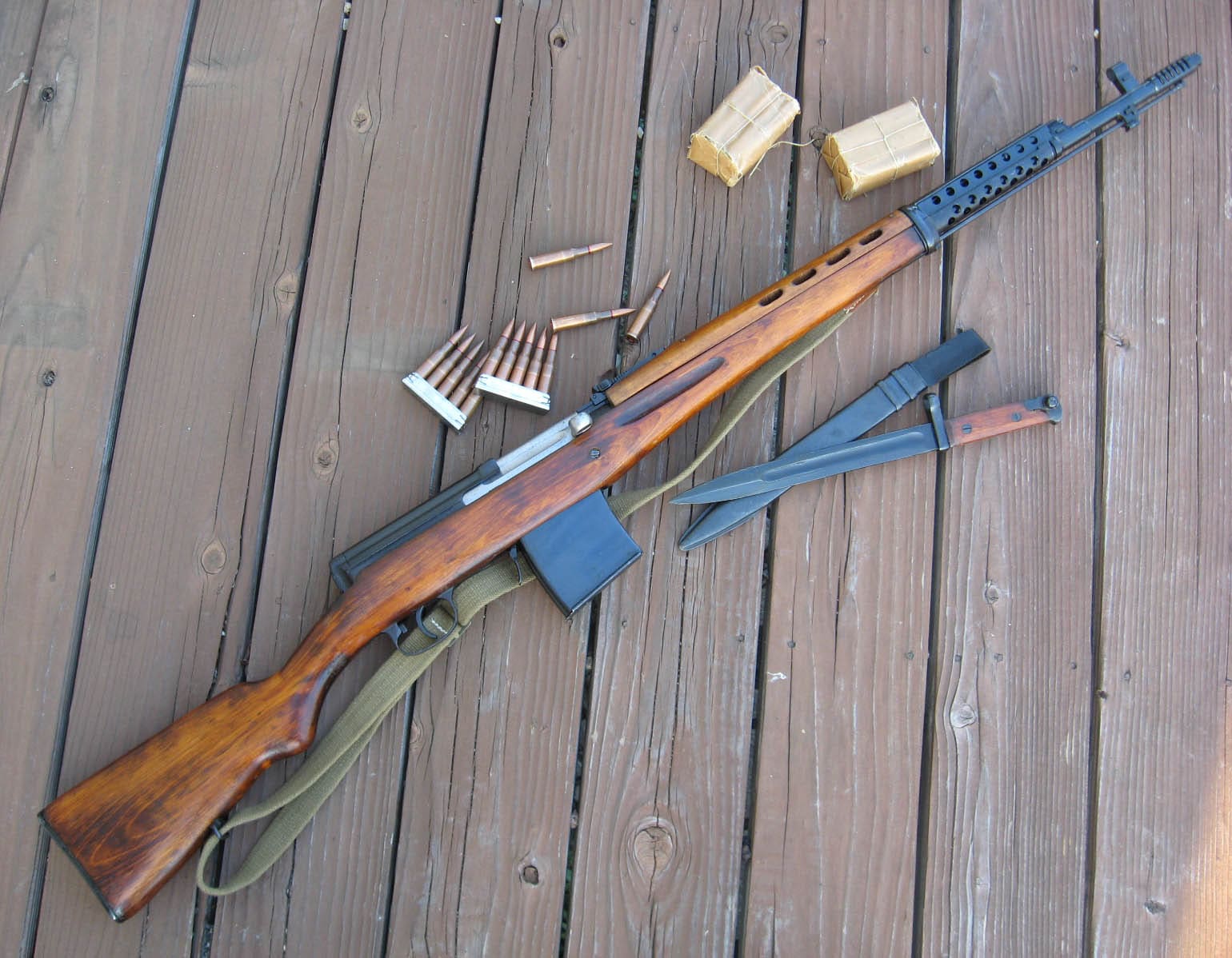
(5) SVT-40
Prior to WWII, Uncle Joe decided Comrade Ivan needed a semiautomatic battle rifle, capable of using the mountains of 7.62x54R ammo the Red Army had stockpiled. The original (designed by Tokarev) was the SVT-38. The shortcomings of the initial design became apparent in the Russo-Finnish War, but by 1940 they had worked out the bugs, yielding the SVT-40. While they were not able to produce enough of them to fully equip the Red Army after Hitler invaded (the Red Army went back to the Mosin Nagant as its standard infantry weapon, because they could be churned out by the trainload in short order), the SVT-40 was nevertheless widely used in WWII.
This one is a real beast. As anyone who has shot a Mosin Magant can confirm, 7.62x54R rounds pack a heck of a wallop, but the short-stroke piston of the SVT-40 tames the recoil nicely. Pretty good trigger, and accurate even with cheap milsurp ammo.

(6) L1A1
Also known as the “Inch Pattern FAL,” this is the semi-auto only version of the FN FAL that was fielded by the British Army (and, in select fire versions, by other Commonwealth nations), in 7.62 NATO of course.
This particular example is largely from a Lithgow (Australian) parts kit. Like most FAL’s, it’s smooth shooting and very accurate, and milsurp ammo is readily available.

(7) Rasheed Carbine
What happens when you cross a Ljungman Ag-42 and an SKS in the desert? You get the Rasheed Carbine, the rarest of the guns shown.
In the 1940’s, Sweden developed its own semi-auto battle rifle (Ag-42, chambered in, what else, 6.5 Swedish). In the 1950’s Nasser decided that Egypt needed its own domestically-produced battle rifle, and purchased the Ljungman tooling from the Swedes. To use the mountains of captured German ammo they were sitting on, the Egyptians rechambered the Ag-42 to 7.92×57 Mauser, yielding the Hakeem rifle.
Fast forward a few years, and the Egyptian’s new Russian allies suggest that the Egyptians really need to adopt the Eastern Bloc 7.62×39 standard. The downsized Hakeem became the Rasheed carbine, which utilizes the Ljungman action in 7.62×39. However, only 8,000 were made, as the Egyptians soon realized that the Russians were giving away SKS’s, and besides all the cool Eastern Block kids were getting AK-47’s.
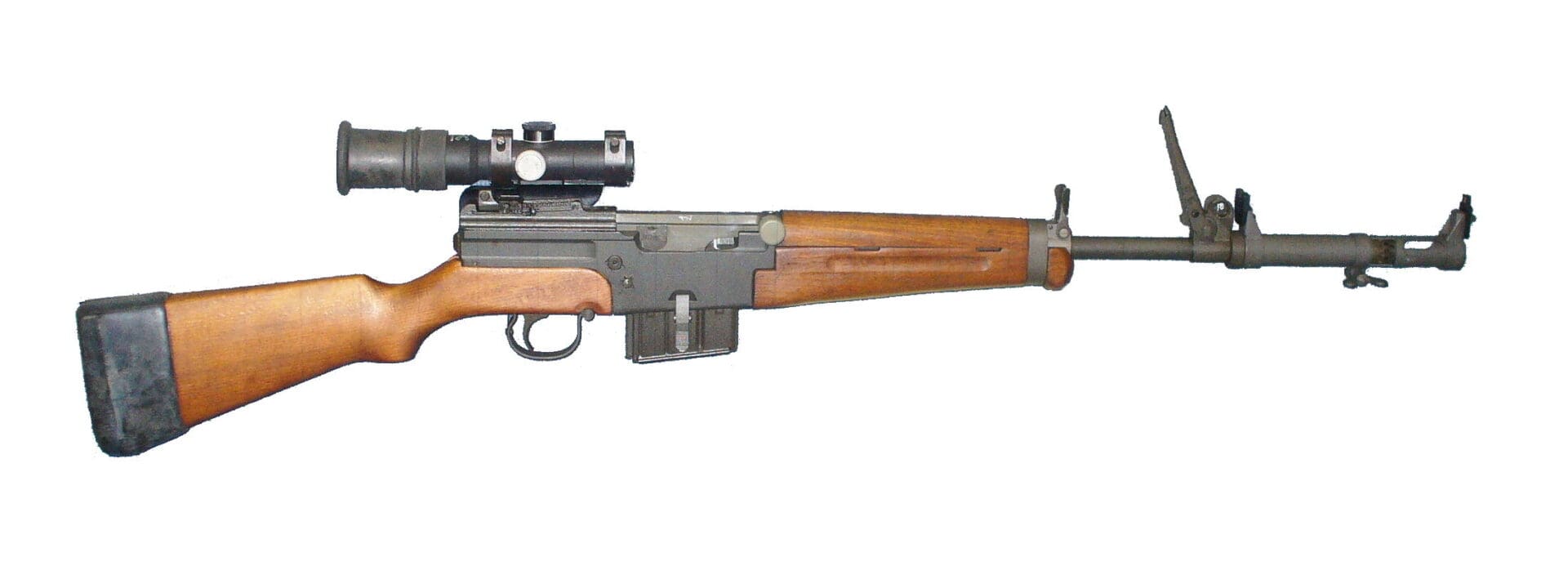
(8) MAS-49/56
After WWII, it seems that every European army wanted its own semiautomatic battle rifle in its own particular caliber. While the FAL and its variants (and 7.62 NATO ammo) ultimately became the standard in Western Europe through the 1980’s, for a while the French had a surprisingly excellent homegrown entry: the MAS-49/56.
Chambered in 7.5 French, it uses a rear-locking tilting block (similar to that on the Browning Automatic Rifle), with a free-floating barrel and removable magazines. Unlike most other semiautomatic battle rifles, it is a direct impingement system rather than a piston. Nice trigger, very accurate. Too bad there’s not any cheap ammo out there for it.

(9) M1 Garand
Patton thought it was the perfect infantry weapon, and for shooters it’s probably the best-loved U.S. milsurp rifle. (Just don’t feed it modern 30.06 loadings. And watch out for your thumb when loading those en bloc clips into the weapon.)
My Dad qualified with the Garand in the 1950’s (Sharpshooter). Despite not having not shot one in over 60 years, he had no trouble putting all his shots in the kill zone at 100 yards. And had a grin on his face the entire time.

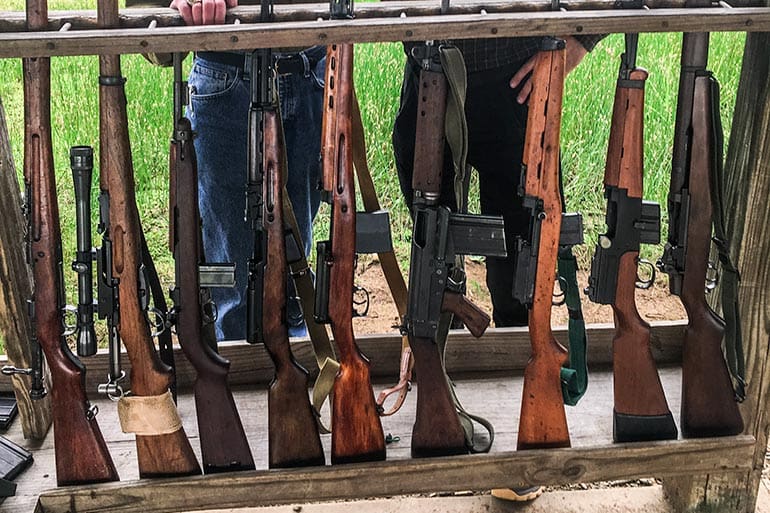


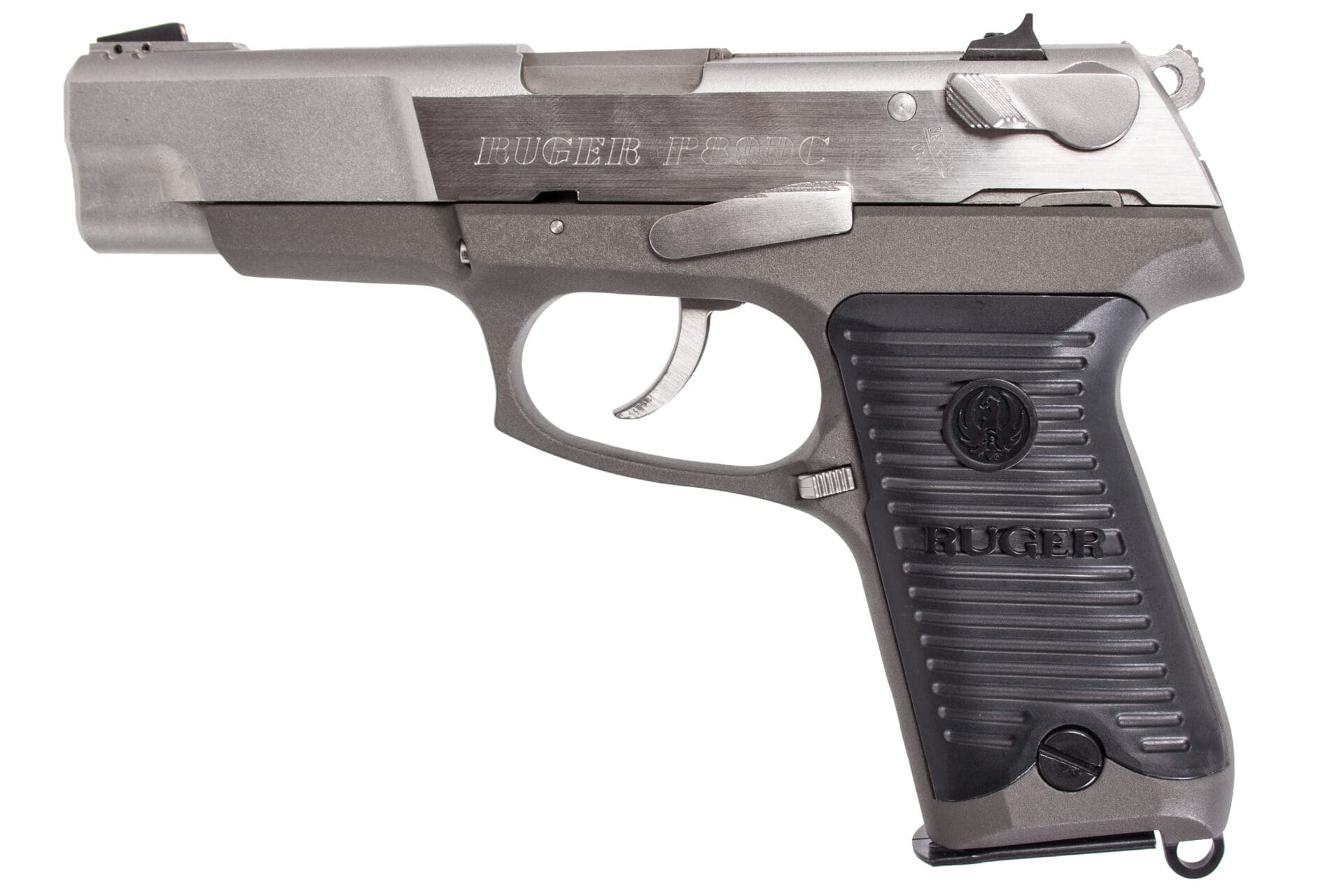
Man, I could only ident 3 of them.
*sobbing pitifully*…
Hmm… so the only country using 6.5 creedmoor in WW2 lost…
How is that even possible?
They couldn’t afford any ammo.
Congratulations, JOHN!
So, even a non-firearms culture like the Japanese found 6.5mm wanting and went to a round with more ass. Ain’t nothing new under the sun.
The FAL looks more Canadian. They used plastic stocks while Australian had timber with steel butt plate. I only used them for 20 years though.
Both were inch rather than metric pattern so parts are interchangeable.
The photo Dan used here to illustrate an L1A1 isn’t the actual rifle shown in the contest photo.
As you might be able to see in the contest photo, the L1A1 stock and grip are indeed wood, and the handguard is wood laminate (which the Aussies went to in the late 60’s, as the solid coachwood handguards they originally used tended to crack under use).
LKB
Didn’t notice the different photos.
I am very familiar with Australian FAL. As noted above I carried one for years in cadets then the army for over 20 years.
Fantastic collection.
The FAL is my favorite. It’s the one rifle I’d be willing to spend big money on. I’ve fired one and thought it fantastic.
I know that guy, he’s got issues
Congrats!! Nothing is more Americany than to receive 300 rounds of cheep, Filipino Ammo. Just don’t shoot it out of anything you treasure. Giving it away to someone you don’t know is probably the best use for it. Ok, I do like the gun with a Schwinn handlebar grip. Maybe a purple streamer to give it a nice touch?
Comments are closed.